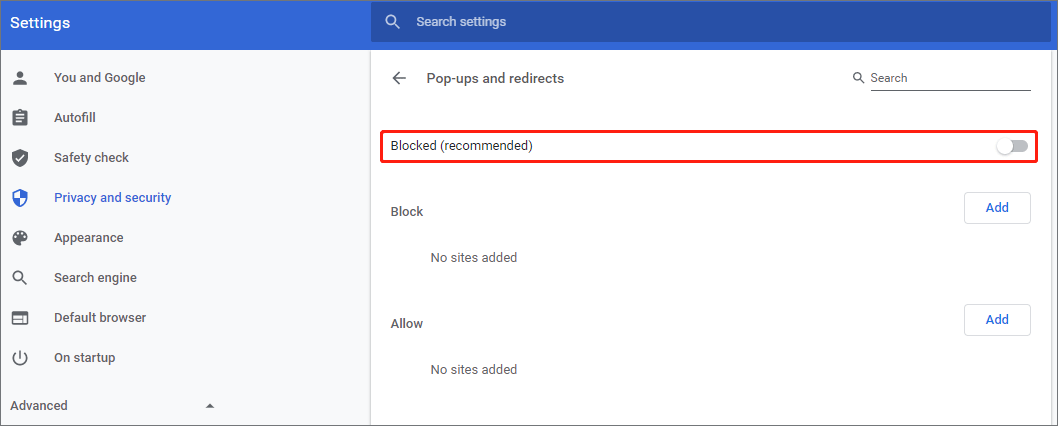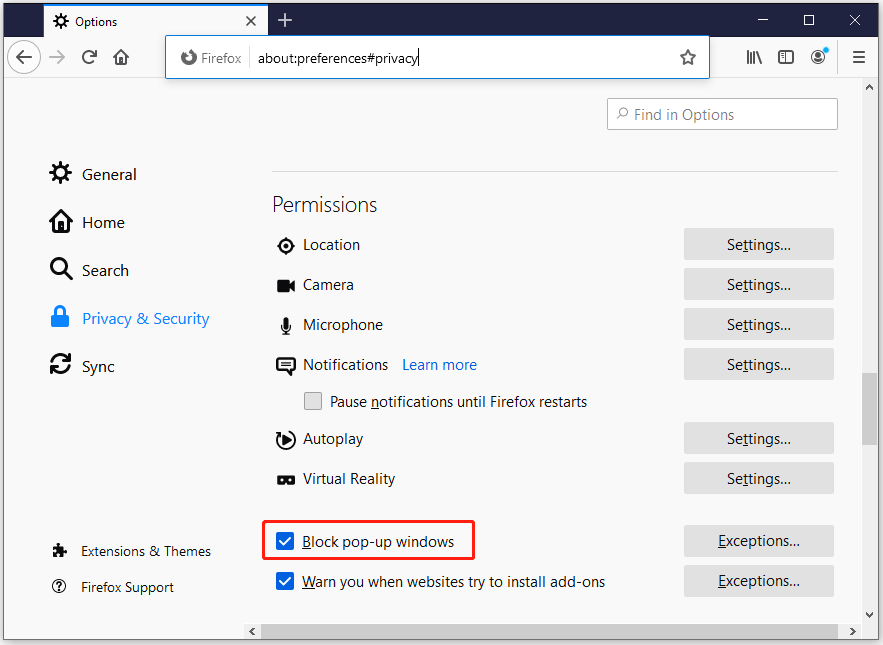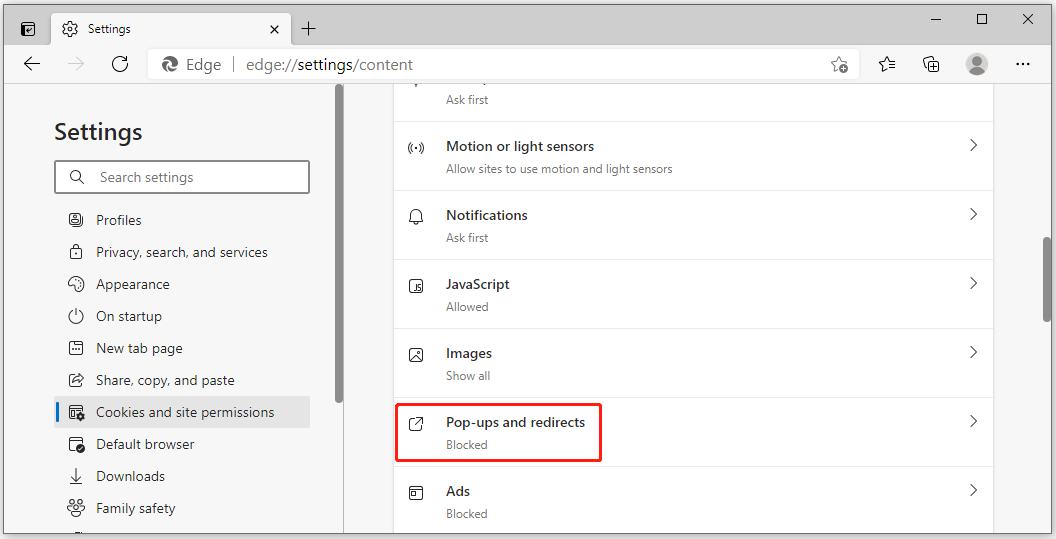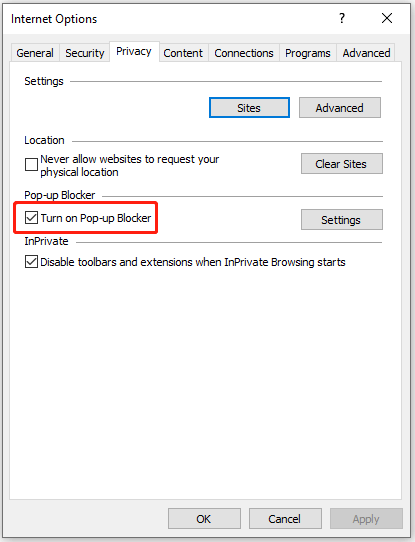The Microsoft Edge feature that blocks pop-ups is effective in preventing websites from automatically opening a new window or tab, or a partial window on top of your current web page. This feature is turned on by default.
There are many different types of pop-ups, including advertisements, notices, offers, or alerts that can appear at various times on any web page. Some can be helpful, such as when a bank website displays your monthly statement in a pop-up window. Pop-ups can also be distracting or malicious, engaging in phishing tactics such as warnings, prizes, or free downloads, to gain your trust in a potential scam.
Note: If you are receiving unwanted website notifications, please see Manage website notifications in Microsoft Edge. Website notifications appear in the notification center, located in the lower right corner of your device.
How to block pop-ups in Microsoft Edge
-
In Edge, go to Settings and more at the top of your browser.
-
Select Settings > Cookies and site permissions.
-
Under All permissions, select Pop-ups and redirects.
-
Turn on the Block (recommended) toggle.
When this feature is turned on and a pop-up has been blocked, Edge will display the following image in your web browser’s address bar.
What to do if you still see pop-ups
If you continue to receive pop-ups after turning this feature on, try the following solutions:
-
Make sure Edge is up to date: Select Settings and more > Settings > About Microsoft Edge . If there is an update available, you can apply it from here.
-
Scan your device for malware:For more, see Stay protected with Windows Security.
-
Disable your extensions: Check if an extension is interfering. Select Settings and more > Extensions > Manage extension, then turn each extension off. If pop-ups are now being blocked, turn on extensions one at a time to determine which one is causing the issue.
-
Block third-party cookies:To do this, select Settings and more > Settings > Cookies and site permissions > Manage and delete cookies and site data, and turn on Block third-party cookies.
-
Clear your browser cache: For more, see View and delete browser history in Microsoft Edge.
What cannot be blocked by the pop-up blocker?
If you still see pop-ups within a web page once this feature is turned on and you have tried the solutions listed above, they may be website advertisements created to look like pop-ups. Website advertisements cannot be blocked by the Edge pop-up blocker. Edge also does not prevent a pop-up from opening if you select a button or link on a web page.
Note: This topic is for the new Microsoft Edge . Get help for the legacy version of Microsoft Edge.
Need more help?
Вы получаете раздражающие всплывающие окна от вашего браузера, которые мешают вам проверять электронную почту и просматривать веб-страницы?
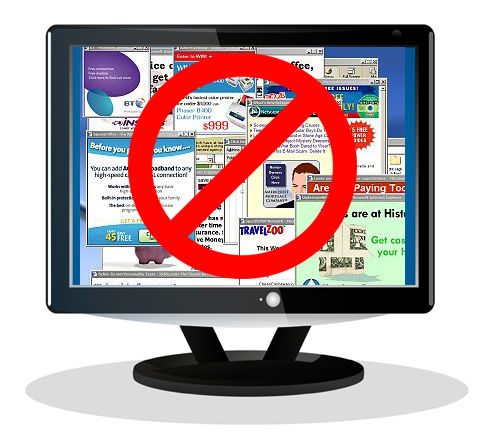
Всплывающие объявления раздражают.
Если вы просто вздрогнули от самой мысли всплывающих объявлений, мы здесь, чтобы помочь вам остановить всплывающие окна и помешать им проникнуть в ваш просмотр.
Чтобы начать работу, выполните приведенные ниже простые шаги, чтобы помочь вашему браузеру откликнуться на эти надоедливые всплывающие объявления!
Для пользователей Microsoft Internet Explorer:
- Обновление до последней версии Internet Explorer
- Используйте встроенную функцию блокировщика всплывающих окон Internet Explorer:
- Открыть IE
- Выберите Инструменты
- Нажмите « Блокировщик всплывающих окон»
- Выберите « Включить всплывающее окно»
Вы можете остановить всплывающие объявления в Internet Explorer в этом меню.
- Чтобы повысить защиту от всплывающих объявлений всех видов, рассмотрите возможность установки надстройки Super Ad Blocker для Internet Explorer.
- Беспокоитесь о конфиденциальности? Вы также можете добавить в свой браузер списки отслеживания защиты (TPL), чтобы контролировать, будет ли ваша информация отправлена третьим лицам, перечисленным в этих списках. Подумайте об этом как о списках «Не звоните» для стороннего контента на веб-сайте.
Для пользователей Mozilla Firefox:
- Обновление до последней версии Firefox
- Используйте встроенную функцию блокировки всплывающих окон Firefox:
- Открыть Firefox
- Выберите Инструменты
- Нажмите « Параметры»
- Нажмите « Содержание»
- Выберите « Блокировать всплывающие окна»
- Нажмите ОК.
Остановите всплывающие объявления в Firefox в меню «Содержимое».
- Чтобы повысить защиту от всплывающих объявлений всех видов, рассмотрите возможность установки всплывающего надстройки AdBlock Plus
Для пользователей Google Chrome:
- Обновление до последней версии Chrome
- Используйте встроенную функцию блокировки всплывающих окон Chrome:
- Открыть Chrome
- Нажмите значок « Настроить и управлять» (верхний правый угол)
- Нажмите « Настройки»
- Нажмите « Дополнительные настройки».
- Нажмите Конфиденциальность
- Нажмите Настройки контента
- Нажмите « Всплывающие окна»
- Выберите « Не разрешать сайтам показывать всплывающие окна».
- Нажмите Готово
Блокировка всплывающих объявлений похожа на Chrome, но она находится там.
- Чтобы усиленная защита от всплывающих объявлений всех видов, подумайте над установкой дополнения Better Pop Up Blocker
Для пользователей Opera:
- Обновление до последней версии Opera
- Используйте опцию блокировщика всплывающих окон Opera:
- Открыть Opera
- Нажмите кнопку Opera (верхний левый угол)
- Нажмите « Настройки»
- Нажмите « Настройки».
- Нажмите « Общие»
- Выберите « Блокировать нежелательные всплывающие окна»
- Нажмите ОК.
Блокировать всплывающие объявления в Opera в меню «Общие настройки».
- Чтобы повысить защиту от всплывающих объявлений всех видов, рассмотрите возможность установки надстройки AdBlock Plus для Opera.
Для пользователей Apple Safari (Windows):
- Откройте окно своего браузера, нажмите
Значок передачи в правом нижнем углу и выберите раскрывающийся список « Блокировать всплывающие окна» в раскрывающемся меню.
- Чтобы повысить защиту от рекламы всех видов, рассмотрите возможность установки надстройки Adapter Safari ( Примечание. Apple прекратила поддержку браузера Safari для Microsoft Windows. Использование этого браузера может привести к уязвимости вашего компьютера и поэтому не рекомендуется)
Ура! Больше нет всплывающих окон!
Вы можете попрощаться с этими раздражающими всплывающими объявлениями и начать наслаждаться просмотром вашего браузера.
Советы по обеспечению безопасности просмотра:
- Всегда проверяйте, включена ли ваша программа защиты от вирусов или интернет-безопасности
- Убедитесь, что включена опция блокировки всплывающих окон вашего браузера (см. Шаги выше)
- Никогда не устанавливайте панели инструментов или надстройки, которым вы не доверяете или не нуждаетесь. Когда сомневаешься – посмотри .
- Никогда не нажимайте на текстовые ссылки или баннерные объявления из ненадежных или ненадежных источников.
A reader asked us a simple question that, well, isn’t so simple. ‘How do I block pop up windows in Windows 7 and Windows 8?’ he said. That and no more.
It’s not simple because it is such a broad question. So we’ve taken a broad approach. In this article I’ll show you how to prevent pop ups appearing when you are browsing the web with Internet Explorer, Firefox and Chrome, when using Windows 7 or Windows 8. I’ll also show you how to remove annoying pop up windows from the Windows Desktop, by removing the program that is causing them – often an expired AV program.
It should be said that some pop ups are unavoidable: if your PC is at risk, Windows will want to warn you. In almost all cases there is a checkbox that allows you to dismiss that and future messages, but the nagging voice of sense is a part of Windows that will never go away. As a general point, however, a pop up message that isn’t from Windows itself is likely to be a sign of some software being up to no good. As with all Windows PCs and laptops you must ensure you are running solid and up-to-date security software. See our
Best antivirus for PC and laptop.
If you see an unwanted pop-up every time you boot your PC or laptop, it is pretty much guaranteed that some software you neither need nor want is installed. We’ll address that issue first, before tackling annoying pop-ups when you are browsing the web.
How to get rid of annoying pop ups on the Desktop
As we mentioned above there are some pop ups that Windows itself sends your way. These have been reduced in Windows 7 and Windows 8, but they will never go away entirely. And, well, they’re important.
However, some programs you have installed intentionally or unwittingly will continue to nag you long after you have had a use for them. Below we’ll show you how to install a program that is nagging you. But first a word of caution: if your security software, your antivirus, is asking you to update, you may have out of date protection and you need to do something about it. But that doesn’t mean you have to pay to renew. You could delete the program as outlined below, and then
turn on the free Windows Defender.
So, if you keep seeing an annoying nagging window asking you to update or pay for software you no longer use, you should uninstall that program. If you don’t know it’s name, open up the task manager when it is doing its annoying trick and you’ll find it listed there.
In both Windows 7 and Windows 8 you can uninstall a program by opening Programs and Features. In Windows 7 click the Start button, Control Panel, clicking Programs, and then choose Programs and Features. In Windows 8 just open up the Search charm and type in Programs and Features.
Select the program you want to kill and click Uninstall. Some programs include the option to change or repair the program in addition to uninstalling it, but many offer only the option to uninstall. Choose Uninstall, then confirm your choice. And you’re done.
How to stop pop ups when browsing the web
Also check out our round-up of the
best ad-blockers.
Here’s how to stop pop ups appearing when browsing with IE (Internet Explorer). Open Internet Explorer. Click the tools button (it is in the top righthand corner and looks like a cog), then select internet options. Go to the Privacy tab, and under Pop-up Blocker, select the Turn on Pop-up Blocker check box, and then tap or click ok.
If this box is clicked and you are still seeing pop ups, hit Settings, and in the Pop-up Blocker Settings window that appears go to the bottom and find ‘Blocking level’. Change the droop-down from the default ‘Medium: Block most automatic pop-ups’ to ‘High: Block all pop-ups (Ctrl+Alt to override)’.
Here’s how to stop pop ups appearing when browsing with Firefox. First, open up Firefox.
At the top lefthand corder of the Firefox window, click on the Firefox button and then select Options, then select the Content panel. You’ll see a checkbox entitled ‘Block pop-up windows’. Ensure it is checked. Unlike IE there are no levels of pop-up blocking: just on or off. Exceptions allows you to add a list of sites that you want to allow to display pop-ups.
Here’s how to stop pop ups appearing when browsing with Chrome.
By default Google Chrome simply prevents pop-ups from automatically appearing and cluttering your screen. Whenever the browser blocks pop-ups for a site, the blocked pop-up alert icon appears in the address bar.
You can check that this is in place by opening Chrome and clicking the options icon, it looks like three horizontal lines and can be found in the top righthand corner of the window. Click it, then scroll down and select ‘Settings’. Now scroll down to the bottom and click ‘Show advanced settings’. Then find and choose ‘Content settings’, under ‘Privacy’. Like Firefox you can now choose to allow all or no pop-ups, and choose to add exceptions.
See all
How to articles.
Download PC Repair Tool to quickly find & fix Windows errors automatically
Pop-up ads are small – sometimes large – windows that open automatically on your screen, when you are browsing the web. They could be pop-ups or pop-unders. Pop-ups open in front of your active browser window whereas a Pop-under open under your browser, and it is only when you go on to close your browser, do you see the pop-under.
Nothing can be more irritating than getting pop-ups in your browser when you are surfing the internet. These days, however, most modern browsers have solid pop up blockers that help block pop-ups in Windows- and they are enabled by default. While there may some popups which are useful and important – some can be irritating advertisements, adware, phishing pop-ups, scareware pop-ups forcing you to buy fake optimizers or security software, Drive-by download pop-ups or pop-ups which install malware when you close them.
A pop up may open when you are surging a website, or it could get triggered when you open some link on a web page. In such cases two windows open, one your link and the other some pop-up ad. If pop-up ads open even when you are not surfing, it is quite possible that your Windows computer might be infected with spyware or have adware installed.
Manage Pop-Ups in browsers
Most security software today includes a robust anti-popup feature. It is usually enabled by default – but make sure you do have enabled it on your antivirus software. But many times, even with all our anti-popup features in place, you do see them slip through occasionally. If you desire additional protection, you may install a pop-up blocker browser extension, or consider installing a free pop up blocker software. They are pretty aggressive in blocking pop-ups and pop-unders.
Whenever a pop-up is blocked by your browser, you will see a notification to this effect. You will also be offered options to – Allow pop up or Block pop up – This time or Always. In this post, we will see how you can block irritating pop-ups in Edge, Chrome, Firefox, Internet Explorer, Opera web browsers in Windows 10/8/7.
Block Pop-Ups in Chrome
Launch Chrome, type the following in the address bar and hit Enter:
chrome://settings/content/popups
Here you can manage, allow, or block popups.
Block Pop-Ups in Firefox
Launch Firefox and navigate to the following setting using your address bar:
about:preferences#privacy
Here, you can:
- Allow Sites
- Remove Site
- Remove All Sites.
Block Pop-Ups in Opera
Launch Opera, type the following in the address bar and hit Enter:
settings/content/popups
Here you can manage, allow, or block popups.
Manage Popups in Microsoft Edge
Launch Edge (Chromium), type this in your address bar and hit Enter:
edge://settings/content/popups
Here you can manage, allow, or block popups.
Block Pop-Ups in Internet Explorer
Open Internet Options > Privacy tab. Under Pop-up Blocker settings, you can check or uncheck the Turn on Pop-up Blocker checkbox to Turn On or Turn Off the popup blocker.
Clicking on its Settings button will allow you to add or remove websites where pop-ups should be allowed. You can also select the Blocking Level from High, Medium, or Low. The Medium setting is suitable for most users.
Just for your information, the Pop-up Blocker is different from SmartScreen, as it only limits most pop-ups on sites. SmartScreen on the other hand checks sites you visit and files you download for threats to your security.
Hope this helps you. In a few days, we will see how to avoid harmful pop-ups on your browser.
Anand Khanse is the Admin of TheWindowsClub.com, a 10-year Microsoft MVP (2006-16) & a Windows Insider MVP (2016-2022). Please read the entire post & the comments first, create a System Restore Point before making any changes to your system & be careful about any 3rd-party offers while installing freeware.
By default, Google Chrome blocks pop-ups from automatically showing up on your screen. When a pop-up is blocked, the address bar will be marked Pop-up blocked . You can also decide to allow pop-ups.
If you still get pop-ups after disabling them:
- You may have previously subscribed to receive notifications from a site. You can block notifications if you don’t want any communications from a site to show up on your screen.
- Your computer or phone may be infected by malware. Learn how to get rid of malware.
Change your default pop-ups & redirects settings
- On your computer, open Chrome
.
- At the top right, click More
Settings.
- Click Privacy and security
Site Settings.
- Click Pop-ups and redirects.
- Choose the option you want as your default setting.
Manage pop-ups & redirects for a specific site
Not all pop-ups are ads or spam. Some legitimate websites display web content in pop-up windows.
Allow pop-ups and redirects from a site
Block pop-ups and redirects from a site
Block notifications
If you still get communications from a site after disabling pop-ups, you may be subscribed to notifications. To turn off notifications for a site:
- On your computer, open Chrome.
- Go to the site you are getting notifications from.
- Select View site information
.
- Next to Notifications, select Block from the drop down menu.
You can also block notifications from your site settings.
Problems with pop-ups
Still seeing unwanted pop-ups: Try running the Chrome Cleanup Tool (Windows only). Then, read other options for finding and removing malware from your computer.
Using a Chrome device at work or school: Your network administrator can set up the pop-up blocker for you. If so, you can’t change this setting yourself. Learn about using a managed Chrome device.
Learn how to control specific ways a website can act when you’re using Chrome.
My site’s popups are being blocked
Chrome blocks pop-ups that users might not find useful.
If pop-ups are being blocked on a site that you own, visit the Abusive Experience Report. In the report, you’ll learn if there are any issues found with your site that you can address
Was this helpful?
How can we improve it?
It’s important to note that Microsoft no longer issues security updates for Internet Explorer. Nevertheless, many people still use IE — while it has less than 1% of the global browser market share, that’s still millions of people. If you’re still using Internet Explorer, you should change your default browser to protect your device against malware that can exploit the potential security weaknesses of IE.
How to stop pop-ups on Internet Explorer
The latest version of Internet Explorer, IE 11, comes with capabilities to enable and disable Internet Explorer pop-up blockers. This process will only block pop-ups, and not all ads. If you want to block all ads in your browser, installing an ad blocker extension will do the job.
Here’s how to block pop-ups in Internet Explorer:
-
Open Internet Explorer and select Tools (the gear icon in the upper-right corner of the browser).
-
Select Internet Options from the menu.
-
Select the tab Privacy when the dialog box opens.
-
Check the box to block pop-ups in the section called Pop-up Blocker. (This may already be checked, as IE blocks pop-ups by default.)
-
Select Apply to save the changes. The Internet Explorer pop-up blocker is now enabled.
If you’re already poking around the Tools section, you can also try deleting your cookies and clearing your browser history so that your browsing is faster and smoother overall. As mentioned above, since Internet Explorer is no longer being updated, you should switch to another browser with strong privacy and security features.
How to stop Microsoft Edge pop-ups
Depending on the version of Edge you have, pop-ups may already be blocked by default. Here’s how to find the pop-up blocker so you can stop pop-ups in Microsoft Edge.
-
Open a new browser window and go to the user menu (click the three horizontal dots on the right side).
-
Select Settings (near the bottom of the menu). The Settings menu should open in a new tab.
-
Select Cookies and site permissions in the Settings menu.
-
Go to Pop-ups and redirects.
-
Toggle the Block setting to on if it isn’t already. This should stop all Microsoft Edge pop-ups.
Blocking pop-ups on Edge and IE takes just a few clicks. If you’ve blocked pop-ups and still see them, your computer may have some type of malware or an unwanted browser extension installed. In that case, you should uninstall any unrecognized browser extensions and use strong antivirus software to find the problem.
While blocking pop-ups on Edge and IE is pretty easy, there are other web browsers that make blocking pop-ups even easier — while offering strong security protections. Avast Secure Browser is a dedicated privacy browser that, along with blocking pop-ups, also automatically blocks all ads and other intrusive content that slows down your browsing.
Avast Secure Browser also has advanced built-in security features such as malicious site blocking and forced HTTPS encryption, making your browsing much more secure. With all these features and more, it’s time you switched to a modern browser.
Looking to block pop-ups in Chrome?
You can block pop-ups in every browser, including Chrome. You’ll find the option to block or unblock pop-ups in the settings. To learn more, check out our guides for blocking pop-ups in Chrome, managing pop-ups in Firefox, and allowing or blocking pop-ups in Safari.
Should I block pop-ups?
You should block pop-ups if you want to see fewer ads or notifications while using your PC. But some sites use pop-ups to open a new window or for online forms, and if all pop-ups are blocked, some sites might not work properly.
To make sure all the sites you visit work as they should, learn how to allow certain pop-ups while keeping others blocked. Read on to learn how to enable pop-ups in Internet Explorer and Microsoft Edge.
How to allow pop-ups on Internet Explorer (IE)
If you want to experience all the features of certain websites, here’s how to allow pop-ups on Internet Explorer:
-
Open Internet Explorer and select Internet Options from the Tools menu.
-
In the Internet Options dialog box that opens, go to the Privacy tab.
-
Uncheck the Turn on Pop-up Blocker box to enable all pop-ups in IE. To allow pop-ups only on certain websites, skip this step and continue with the steps below.
-
Select the Settings button in the Pop-up Blocker section. A new dialog box called Pop-Up Blocker Settings should appear.
-
Go to the “Address of website to allow” field and type in the address of the website you want to allow pop-ups on. Repeat as necessary for each website whose pop-ups you want to allow.
How to allow pop-ups on Microsoft Edge
For Microsoft Edge, the process of allowing pop-ups is very similar to blocking pop-ups. Here’s how to allow pop-ups on Edge:
-
Open your Edge browser, go to the user menu (the three horizontal dots in the upper right), and select Settings.
-
Select Cookies and site permissions in the Settings menu.
-
Scroll down and click Pop-ups and redirects.
-
Toggle Block to off.
-
Click the Add button in the Allow box to allow pop-ups on specific sites.
-
Type or paste the website address in the Add a site box. Repeat this for each site you want to allow pop-ups on.
And it’s as simple as that. Now you can allow and block pop-ups however you want. In the Edge browser menu you can also adjust other settings, such as enabling and disabling cookies. To keep your browser in top shape, be sure to use a browser cleaning tool to get rid of clutter and other junk that builds up over time.
Should I allow pop-ups?
Allowing pop-ups for certain sites can make your browsing experience easier. While many pop-ups are annoying ads or even links to unsafe websites, they can sometimes be useful. Some sites may display their terms of service or other important information in a pop-up.
Pop-ups may also be used to show download notifications or dialog boxes. And sometimes, videos can appear as pop-ups. The best approach for most browsers is to keep pop-ups blocked by default, and to add sites to your allow pop-ups list when necessary.
Browse uninterrupted with Avast Secure Browser
You can fool around with the settings in Edge or IE, or you can block pop-ups immediately with the free Avast Secure Browser. Our advanced browser automatically blocks all pop-ups, or you can choose from three tiers of blocking preferences: Light, Basic, and Strict, which you can easily adjust to suit your needs.
/img_22.png?width=1000&name=img_22.png)
And Avast Secure Browser offers even more by default: ad blocking, automatic HTTPS encryption, and an assortment of other features that block malicious websites, phishing attacks, and third-party attempts to get your personal data. For a smoother, safer browsing experience without having to bother with changing the settings, switch to Avast Secure Browser today.
Содержание
- Configuring your web browser to allow pop-up windows
- Safari (macOS)
- Internet Explorer (Windows)
- Edge (Windows 10 only)
- How to Block Pop-Up Windows in Chrome, Firefox, Safari, Opera and IE
- Google Chrome
- Mozilla Firefox
- Opera
- Safari
- Internet Explorer
- Conclusion
- Pop-up blocker settings, exceptions and troubleshooting
- Table of Contents
- What are pop-ups?
- Pop-up blocker settings
- Pop-ups not being blocked
- Is the pop-up coming from Firefox?
- Is the pop-up blocker on and enabled for this site?
- Is the pop-up shown after a mouse click or a key press?
- Is it a true pop-up window?
- Mozilla surveys
- Volunteer
- How to Block Pop-Up Ads in Your Web Browser
- Block pop-ups in Chrome, Explorer, Edge, Safari, and more
- What to Know
- Block Pop-Up Ads in Google Chrome
- Block Pop-Ups in Chrome on a Mac or PC
- Block Pop-Ups in Chrome on iOS Devices
- Block Pop-Ups in Chrome on Android Devices
- Block Pop-Up Ads in Microsoft Edge
- Block Pop-Up Ads in Internet Explorer 11
- Block Pop-Up Ads in Safari
- Block Pop-Up Ads in Opera
- Block Pop-Up Ads in Mozilla Firefox
- About pop-up ads and windows in Safari
- Check and update your software
- Check Safari settings and security preferences
- Pop-ups and ads in Safari
- If you might have installed adware or other unwanted software on your Mac
- Learn more
Configuring your web browser to allow pop-up windows
Most web browsers include a feature to block pop-up windows. While this may eliminate unwanted or bothersome pop-up windows, the feature sometimes can impede the functionality of legitimate or useful websites.
Some popular Penn-affiliated websites requiring pop-ups include U@Penn and the Penn Online Directory.
Follow the instructions below to configure your web browser to allow pop-up windows for your selected websites.
Note: If you have installed third party applications to block pop-ups (examples include the Google, MSN, and Yahoo! toolbars), be sure to consult the vendor documentation to allow pop-up windows for desired websites.
Safari (macOS)
Safari for macOS has no per-website control over blocking pop-up windows. Pop-ups are either blocked, or they are not. To allow pop-ups:
Note: If you are concerned about allowing pop-ups globally for all websites that you browse, consider using another web browser that allows website exceptions such as Chrome or Firefox.
Internet Explorer (Windows)
When a website attempts to launch a new pop-up window, you may see dialog boxes alerting you of pop-up windows that have been blocked. Follow the instructions below to allow pop-up windows on a per-website basis.
Notes: Pasting the web address of a page you wish to allow pop-ups is recommended, rather than typing the generic main web address. For example, you might visit www.example.com/requirepopup.html, but the page is actually hosted at popup.example.com/forms/popupform.html. In this example, you must allow popup.example.com, not www.example.com. Note also that entire websites must be allowed, not individual directories or pages, so in this example Internet Explorer will automatically add the top level popup.example.com to its Allowed sites.
Edge (Windows 10 only)
Microsoft Edge for Windows 10 has no per-website control over blocking pop-up windows. Pop-ups are either blocked, or they are not. To allow pop-ups:
Note: If you are concerned about allowing pop-ups globally for all websites that you browse, consider using another web browser that allows website exceptions such as Chrome or Firefox.
Источник
How to Block Pop-Up Windows in Chrome, Firefox, Safari, Opera and IE
Pop-up ads are annoying. No matter how well it is designed, it never fails to annoy the users. If you are one of those who hate pop-up ads, here is the method to block pop-up windows in the various browsers.
Note: By blocking pop-up windows, you could be potentially lowering/stopping a developer’s income, which could lead to said developers stopping his/her services. We’d recommend keeping wary of what you click rather than simply blocking pop-up windows, but in the end, it’s up to you.
By default, most web browsers will have the “Block Pop-Up Windows” feature activated, but if that’s not true in your case, here’s how to block them:
Google Chrome
Windows/Mac/Linux
1. Click the Settings icon in the top-right corner of your browser, and select “Settings.”
2. Scroll down and click on “Show Advanced Settings.”
3. In the Privacy section, click “Content Settings.”
4. Here, select the option “Do not allow any site to show pop-ups.”
Tip: Use the “Manage Exceptions” option to add websites, on which you want pop-ups to be shown.
iOS/Android
1. Open the Settings window in your device’s Google Chrome browser, and click on Settings.
2. Click on “Content Settings.”
3. Click “Block Pop Ups” and enable the option to “Block Pop-Ups.”
Mozilla Firefox
Windows/Linux
1. Open Firefox and click on the Settings icon in the top-right corner, then click on “Options” (or “Preferences”).
2. In the Content tab, enable the option to “Block Pop Up Windows.”
1. Open up Firefox and select “Preferences” from the Firefox menu in the top-left hand side of your screen.
2. In the Content tab, select the option to “Block Pop-Up Windows.”
Opera
1. Click on Preferences in the Opera menu from the top-left corner.
2. In the Websites tab, select the option “Do Not Allow Any Site To Show Pop-Ups.”
Windows/Linux
1. Open the Opera menu by clicking on the “Opera” logo in the top-left corner, and click on “Settings”.
2. In the “Websites” tab, select the option to “Do Not Allow Any Site To Show Pop-Ups.”
1. Click on the Opera logo in the bottom middle of the screen, and select Settings.
2. Enable the option to “Block Pop-Ups.”
Safari
Windows
1. Click on the Settings logo in the top-left corner, and enable the option to “Block Pop-Up Windows.” Alternatively, you can press “Ctrl+Shift+K” to enable the option.
1. Click on Preferences in the Safari menu in the top-left corner.
2. In the Security tab, enable the option to “Block Pop-Up Windows.”
1. Open the Settings app on your iPhone/iPad.
3. Enable the option to “Block Pop-Ups.”
Internet Explorer
1. Click on “Internet Options” from the Settings icon in the top-right corner.
2. In the Privacy tab, enable the option to “Turn On Pop-Up Blocker.”
Conclusion
Pop-up windows can be a real issue for many people. While these may be beneficial to the people behind them, many pop-ups contain malware, and can infect your computer with viruses leading to data loss. If you too are annoyed with pop ups, then you can easily use the methods detailed above to block pop-ups windows in your respective browser, according to your operating system.
Shujaa Imran is MakeTechEasier’s resident Mac tutorial writer. He’s currently training to follow his other passion become a commercial pilot. You can check his content out on Youtube
Источник
Pop-up blocker settings, exceptions and troubleshooting
This document explains all of the settings available in Mozilla Firefox for controlling pop-ups.
Table of Contents
What are pop-ups?
Pop-up windows, or pop-ups, are windows that appear automatically without your permission. They vary in size but usually don’t cover the whole screen. Some pop-ups open on top of the current Firefox window, while others appear underneath Firefox (pop-unders).
When blocking a pop-up, Firefox displays an information bar (if it hasn’t been previously dismissed – see below), as well as an icon 



When you click either the Options Preferences button in the info bar or the icon in the address bar, a menu is displayed with the following choices:
Pop-up blocker settings
To access the pop-up blocker settings:
Pop-ups not being blocked
Is the pop-up coming from Firefox?
The pop-up may not actually be coming from Firefox. You can determine where the pop-up is coming from by the appearance of the window.
Is the pop-up blocker on and enabled for this site?
Is the pop-up shown after a mouse click or a key press?
Certain events, such as clicking or pressing a key, can spawn pop-ups regardless of if the pop-up blocker is on. This is intentional, so that Firefox doesn’t block pop-ups that websites need to work.
Is it a true pop-up window?
Sometimes ads are designed to look like windows, but really aren’t. Firefox’s pop-up blocker can’t stop these ads.
Mozilla surveys
When you visit a Mozilla website, sometimes you’ll see a pop-up asking you to participate in a survey. The only third-party that Mozilla ever uses for surveys is SurveyGizmo, which has been vetted by our legal and privacy teams. The Firefox pop-up blocker doesn’t block these pop-ups.
These fine people helped write this article:
Volunteer
Grow and share your expertise with others. Answer questions and improve our knowledge base.
Источник
How to Block Pop-Up Ads in Your Web Browser
Block pop-ups in Chrome, Explorer, Edge, Safari, and more
What to Know
Most major web browsers include features that block unwanted pop-up ads. Here’s how to block pop-up ads in Chrome, Microsoft Edge, Internet Explorer, Safari, Opera, and Firefox using any Windows, Mac, Linux, or mobile device.
Block Pop-Up Ads in Google Chrome
The process for blocking pop-up ads in the Google Chrome web browser is similar on Chrome on a Mac, PC, iOS device, or Android device.
Block Pop-Ups in Chrome on a Mac or PC
Open Chrome on a Mac or PC.
Select More (the three vertical dots located in the upper-right corner), then select Settings.
Under Privacy and security, select Site Settings.
Select Pop-ups and redirects.
Turn on the Blocked (recommended) toggle switch.
Since some pop-ups are legitimate, under Allow, add any sites for which you want to accept pop-ups. If you only want to block pop-ups from specific sites, add those sites under Block.
Block Pop-Ups in Chrome on iOS Devices
Open the Chrome app, tap More (the three dots), then tap Settings.
Tap Content Settings > Block Pop-ups.
Turn off the Block Pop-ups option.
Block Pop-Ups in Chrome on Android Devices
Open the Chrome app on the Android device.
On the right of the address bar, tap More (the three dots), then tap Settings.
Tap Site settings > Pop-ups and redirects.
Turn off Pop-ups and redirects.
Block Pop-Up Ads in Microsoft Edge
These instructions apply only to the new Microsoft Edge Chromium-based browser on Windows.
For Edge on a Mac, go to Settings, select Site Permissions > Pop-ups and redirects, then turn on the Block toggle.
Open Edge and go to Settings and more (the three dots).
Select Settings (the gear icon).
Go to Site Permissions.
Select Pop-ups and redirects.
Move the Block toggle to On.
Block Pop-Up Ads in Internet Explorer 11
These instructions apply only to Internet Explorer 11 in Windows.
Open Internet Explorer 11, select Tools (the gear icon), then select Internet Options.
On the Privacy tab, under Pop-up Blocker, select the Turn on Pop-up Blocker check box, then select OK.
Select Settings.
In the Pop-up Blocker settings dialog box, under Blocking level, set the blocking level to High: Block all pop-ups (Ctrl + Alt to override).
Select Close, then select OK.
Block Pop-Up Ads in Safari
For Macs with OS X El Capitan and higher OS X and macOS versions:
For Safari on iOS devices, tap Settings, then select Safari. Under General, turn on Block Pop-ups.
Go to the Safari menu, then select Preferences.
Select Security at the top of the window.
Select the Block pop—up windows check box to enable this feature.
Block Pop-Up Ads in Opera
These instructions apply to the Opera web browser.
In Opera, press Alt+P to open Settings.
Turn on Block Ads.
Alternatively, select the shield icon at the right side of the Opera address bar and turn on Block ads.
Block Pop-Up Ads in Mozilla Firefox
These instructions apply to Firefox on Macs or PCs.
For Firefox on an iOS device, tap the Firefox menu button and select the Settings icon. You may have to swipe left to locate this option. Turn on the Block Pop-up Windows option.
Open Firefox and select the Firefox button near the upper-left corner of the window.
Select Options (Windows) or Preferences (macOS).
In Windows, select Content in the left sidebar. In macOS, select Privacy and Security.
Scroll down and select the Block pop-up windows check box.
Источник
About pop-up ads and windows in Safari
Learn how to block pop-up windows and handle persistent ads on your iPhone, iPad, iPod touch, or Mac.
Pop-ups can be ads, notices, offers, or alerts that open in your current browser window, in a new window, or in another tab. Some pop-ups are third-party ads that use phishing tactics—like warnings or prizes—to trick you into believing they’re from Apple or another trusted company, so you’ll share personal or financial information. Or they might claim to offer free downloads, software updates, or plugins, to try to trick you into installing unwanted software.
Unless you’re confident of an ad’s legitimacy, you should avoid interacting with pop-ups or webpages that seem to take over your screen. Here are additional tips that can help you manage pop-ups and other unwanted interruptions.
Check and update your software
Always make sure you install the latest software updates for all your Apple products. Many software releases have important security updates and may include improvements that help control pop-ups.
The safest place to download apps for your Mac is the App Store. If you need third-party software for your Mac, and it isn’t available in the App Store, get it directly from the developer or another reliable source, rather than through an ad or link.
Check Safari settings and security preferences
Make sure Safari security settings are turned on, particularly Block Pop-ups—for pop-up windows—and the Fraudulent Website Warning.
On your iPhone, iPad, or iPod touch, go to Settings > Safari and turn on Block Pop-ups and Fraudulent Website Warning.
On your Mac, you can find these options in Safari > Preferences. The Websites tab includes options to block some or all pop-up windows, and you can turn on fraudulent site warnings in the Security tab.
Pop-ups and ads in Safari
If you see an annoying pop-up ad in Safari, you can go to the Search field and enter a new URL or search term to browse to a new site. If you don’t see the Search field on your iPhone, iPad, or iPod touch, tap the top of the screen to make it appear.
Some pop-ups and ads have fake buttons that resemble the close button, so use caution if you try to close a pop-up or ad. If you’re unsure, avoid interacting with the pop-up or ad and close the Safari window or tab.
On your Mac, you can also update your settings to prevent windows from opening again after you close Safari, or just press and hold the Shift key when you open Safari.
If you might have installed adware or other unwanted software on your Mac
If you see pop-ups on your Mac that just won’t go away, you might have inadvertently downloaded and installed adware (advertising-supported software) or other unwanted software. Certain third-party download sites might include programs that you don’t want with the software that you install.
If you think that you might have malware or adware on your Mac, update to the latest version of macOS. If your Mac is already running the latest version, restart it. macOS includes a built-in tool that removes known malware when you restart your Mac.
Check your Applications folder to see if you have any apps that you didn’t expect and uninstall them. You can also check the Extensions tab in Safari preferences to check if you installed any unnecessary extensions that you’d prefer to turn off. If you continue to see advertising or other unwanted programs on your Mac, contact Apple.
Learn more
Information about products not manufactured by Apple, or independent websites not controlled or tested by Apple, is provided without recommendation or endorsement. Apple assumes no responsibility with regard to the selection, performance, or use of third-party websites or products. Apple makes no representations regarding third-party website accuracy or reliability. Contact the vendor for additional information.
Источник
Проблема
Браузеры по политике безопасности разрешают открывать всплывающее окно, только, если пользователь непосредственно предпринял для этого какие-то действия. Например, этот код будет работать:
$("someElement").on("click", function(){
window.open("http://yandex.ru")
}
А теперь допустим, что нам надо сделать запрос к API, чтобы получить ссылку и только после этого открыть окно с этой ссылкой.
Таким образом, код уже не будет работать, тк окно уже открывается не по действию пользователя:
$.get("someURL").done(function(res){
window.open(res);
});
Соответственно можно решить задачу так:
1. Заранее получить нужную ссылку, но в таком варианте отпадает возможность передачи каких либо параметров по действию пользователя для формирования ссылки
2. сделать запрос синхронным, что не вариант
3. подумать получше
Третий способ
А что, если открыть окно заранее с пустой ссылкой, для юзабилити и радости глаз нарисовать в окне индикатор загрузки, а после того как ссылка будет сформирована подменить location?
Пробуем, все работает.
Собственно небольшой кусочек кода:
var win = window.open("", params)
//делаем красивости в win.document или втыкаем адрес открываем не пустую ссылку, а заранее заготовленную на сервере заглушку
$.get("someURL").done(function(res){
win.document.location = res;
});
Другие способы решения пишите в комментариях.
-
MiniTool
-
MiniTool News Center
- How to Disable Pop-up Blocker on Chrome, Firefox, Edge, etc.
By Alisa | Follow |
Last Updated November 18, 2022
In this tutorial, you can learn how to disable pop-up blocker of various browsers like Google Chrome, Firefox, Microsoft Edge, Safari on Mac, etc. MiniTool Software offers various computer tips and tricks, as well as utilities like MiniTool Power Data Recovery, MiniTool Partition Wizard, MiniTool ShadowMaker, MiniTool MovieMaker, etc.
Most browsers enable their built-in pop-up blockers by default. The pop-up blockers of browsers keep you from annoying pop-ups or dangerous content from web pages. But they also block pop-ups that you may want to view. If you want to disable pop-up blocker on Chrome, Firefox, Microsoft Edge, Safari, etc. you can check the detailed guides below.
How to Disable Pop-up Blocker on Chrome
- Open Google Chrome browser.
- Click the three-dot menu icon at the top-right corner and select Settings.
- Click Privacy and security in the left panel. In the right window, click Site Settings under Privacy and security section.
- Click Pop-ups and redirects under Content section.
- Turn on the switch next to Blocked (recommended) and it will turn off pop-up blocker on Chrome. You will see the option turns to Allowed.
On this page, you can also click the Add button next to Block or Allow to add websites to the Blocked or Allowed list.
To enable pop-up blocked again, you can toggle the switch to Blocked again.
- Open Firefox browser.
- Click the three-line menu icon at the upper-right corner and select Options.
- Click Privacy & Security in the left panel.
- Under Permissions section in the right window, uncheck Block pop-up windows Then the Firefox pop-up blocker is disabled and it allows pop-ups on Firefox.
How to Turn Off Pop-up Blocker on Microsoft Edge
- Open Microsoft Edge browser.
- Click the three-dot icon at the top-right corner and select Settings.
- In Microsoft Edge Settings, click Cookies and site permissions in the left panel.
- Under Site permissions in the right window, scroll down to find and click Pop-ups and redirects option under All permissions.
- Toggle off the switch next to Block (recommended) to turn off pop-up blocker of Microsoft Edge browser.
How to Disable Pop-up Blocker in Safari on Mac
- Open Safari browser on your Mac computer.
- Click Safari menu and click Preferences.
- Click Websites.
- Toggle off the switch of “Block Pop-up Windows” option.
- Open Internet Explorer browser on your computer.
- Click the gear-like Settings icon at the upper-right corner and select Internet Options.
- Click Privacy tab in the pop-up Internet Options window.
- Uncheck the box of “Turn on Pop-up Blocker” option to disable pop-up blocker of Internet Explorer browser.
As far, you should know how to disable pop-up blocker on Chrome, Firefox, Microsoft Edge, Internet Explorer, and Safari.
MiniTool Software, as a top software developer, provides you MiniTool Power Data Recovery, MiniTool Partition Wizard, MiniTool ShadowMaker, MiniTool MovieMaker, MiniTool Video Converter, MiniTool uTube Downloader, and more. You can go to its official website to download and use these free programs.
About The Author
Position: Columnist
Alisa is a professional English editor with 4-year experience. She loves writing and focuses on sharing detailed solutions and thoughts for computer problems, data recovery & backup, digital gadgets, tech news, etc. Through her articles, users can always easily get related problems solved and find what they want. In spare time, she likes basketball, badminton, tennis, cycling, running, and singing. She is very funny and energetic in life, and always brings friends lots of laughs.
- What is Pop up?
- What Are Pop-up ads?
- Are the Pop ups harmful?
- How to enable or disable pop up ads in web browser
- How to turn Off / On Pop-ups in Google Chrome
- How to Block / Allow Pop-ups in Mozilla Firefox
- Turn On / Off pop-up blocker in Internet Explorer.
- How to Enable / Disable Pop-up ads in Edge Browser
- Why we need to Turn On or Off Pop-ups?
- FAQs
Pop up means something appear suddenly or unexpectedly. In computer world Pop up is a term used for a smaller screen or Window that appears above all other screens. They can be triggered on mouse click, mouse over or after a predefined time. Initially pop ups were used for a nicer user interface to provide useful information quickly to the users. But these days pop ups are notorious for advertisements. And the term become the Pup up ads.
What Are Pop-up ads?
Pop-up ads are the ads that opens up in a separate window while you browse any website. Not just the separate windows but as these days most of the browser support tabs, so they may also open up in a new tab. Even not just the pop up ads but you may also notice the pop under ads as well which remains open in a separate tab.
Are the Pop ups harmful?
Not all the pop ups or Pop up ads are harmful as some times in some legitimate sites they also contain some useful information. But some bad elements use this technique to scare the users for unfair things like to spread the malware or fake malware to force the users to pay for fake tech support. So basically these days scammers use this technique. For this reason mostly all browsers by default block these pop ups. But for some good reason some times we may require to enable the pop ups. Or if they are already enabled and you need to disable them then here is the guide for each browser to turn pop ups on or off.
How to enable or disable pop up ads in web browser
How to turn Off / On Pop-ups in Google Chrome
How to turn Off / On Pop-ups in Mozilla Firefox
How to turn Off / On Pop-ups in Internet Explorer
How to turn Off / On Pop-ups in Edge Browser
How to turn Off / On Pop-ups in Google Chrome
By default chrome have enabled this option for the security of the users. It display a warning when it blocks any pop-up while your browse the websites. You can opt to view or block that pop-up. If it is not then you can enable it or if you require to disable it then you can do so by following the below easy steps. See the screenshot images for more details.
- Go to the Settings option from the Menu.
- Click on the advanced settings and choose the Privacy option.
- Now click on the Content Settings button.
- Scroll down and find the Pop-ups settings to allow or block the pop-ups for all sites. To enable or disable for a
particular site you can click on the Manage Exceptions option.
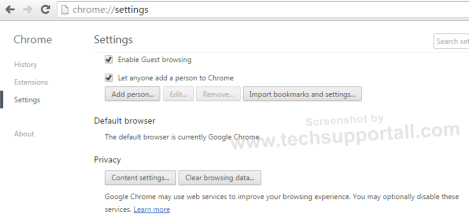
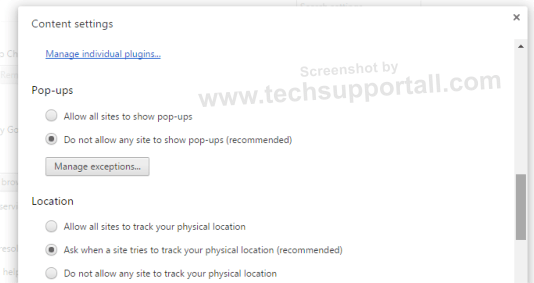
How to Block / Allow Pop-ups in Mozilla Firefox
Firefox by default blocks pop ups and display a warning message each time it blocks pop-ups. You can Turn on or Off Pop-ups in Firefox by following the below simple steps.
- Click on the Menu and choose the Settings.
- Select the Content tab from the options.
- Find out the settings for Pop-ups and change as per your requirement. In Firefox as well you can add the exception list to allow / block settings for a particular website.
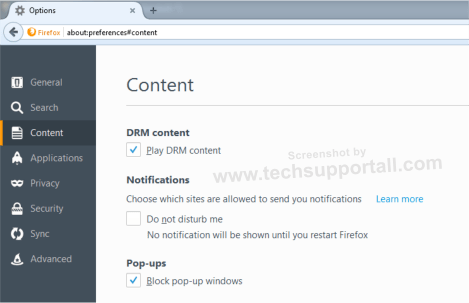
Turn On / Off pop-up blocker in Internet Explorer.
- Click on the Tools Menu.
- Click on Internet Options.
- Select the Privacy tab from the Internet options pop-up windows.
- And Turn on or Off Pop-up blocker.
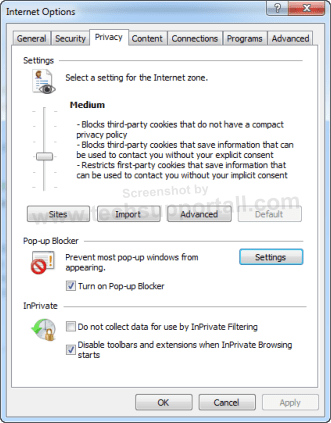
For more settings you can click on the settings option to change the level of Blocking. By default Internet Explorer blocks pop-ups except trusted sites.
How to Enable / Disable Pop-up ads in Edge Browser
Edge is the Newest web browser from Microsoft introduced in Windows 10 to replace the Internet Explorer.
- Click on the More Actions menu and Select Settings options.
- Click on the View advanced settings by scrolling down. Click on it.
- Find out the Pop-up setting to Turn on or Off Pop-ups.
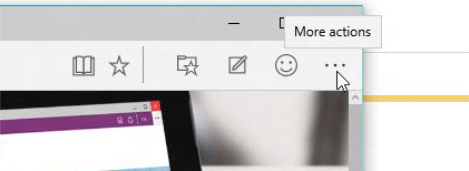
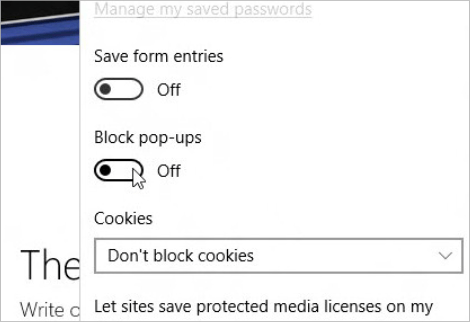
Hopefully this guide will help you to block or allow pop-ups on your browser. Read below why we need to change these settings.
Why we need to Turn On or Off Pop-ups?
Pop-ups come up automatically in front of you without your permission. So sometimes they can become the medium of spreading malware. It is always advisable to block the Pop-ups always. But for legitimate and trusted sites you may sometimes require to allow Pop-ups for a specific site. Every browser have these days settings to configure pop-up blocking. and you can Turn on or Off them as per your requirement. Even some banking site sometimes ask you to enable the pop-ups. So it is not easy to identify the good or bad pop-up. But always only allow trusted sites to show the pop-ups.
FAQs
I have disabled the pop up option in my browser but pop up ads still appear on my browser? How to get rid of these unwanted ads?
It means there is some malware or some unwanted browser extension is installed in the device. Uninstall all unknown browser extensions and programs from the computer and scan the system with a good antimalware software. We suggest you to always keep a good antivirus software installed on your system.



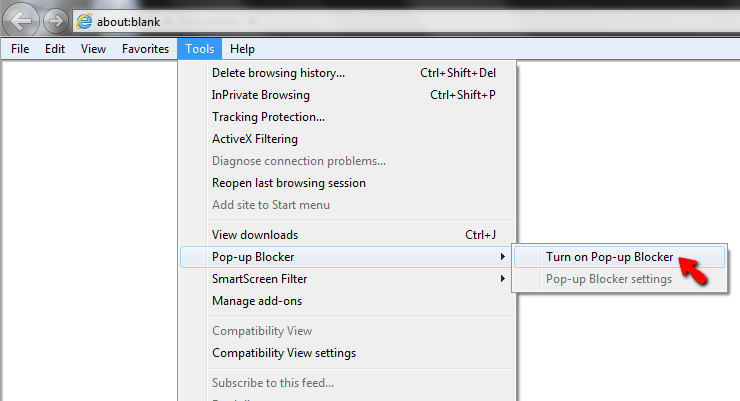
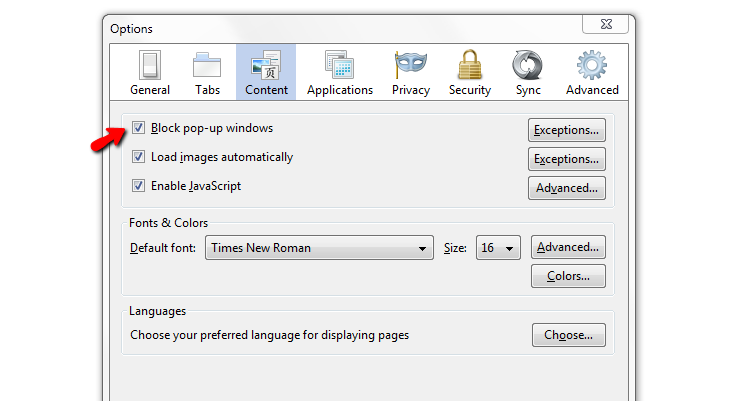
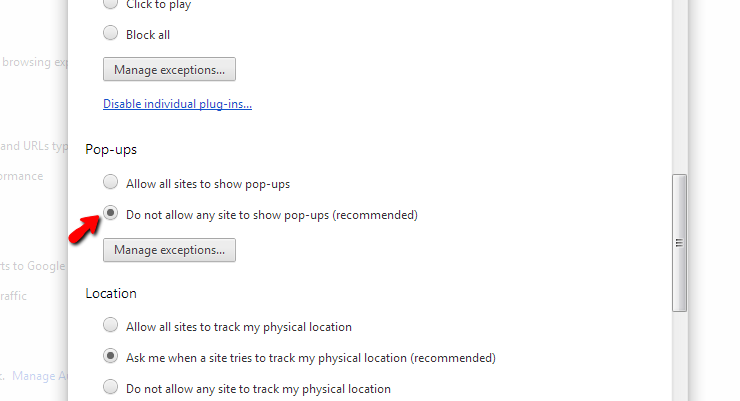
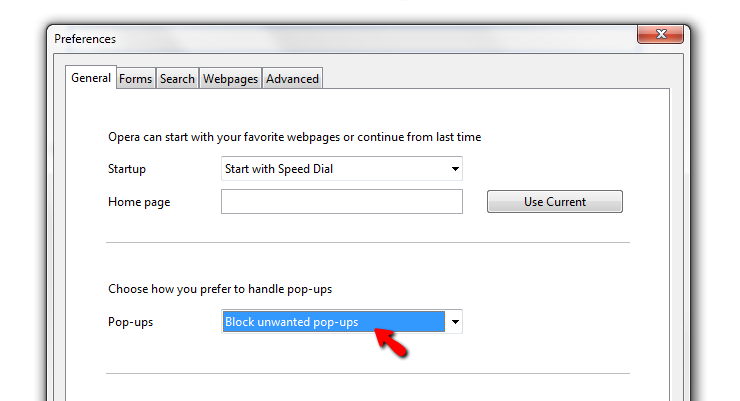
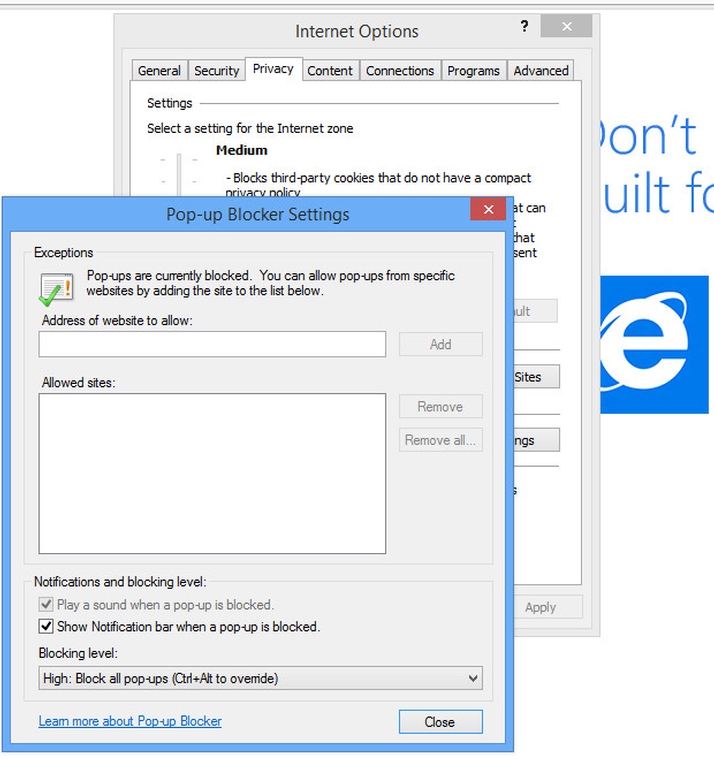
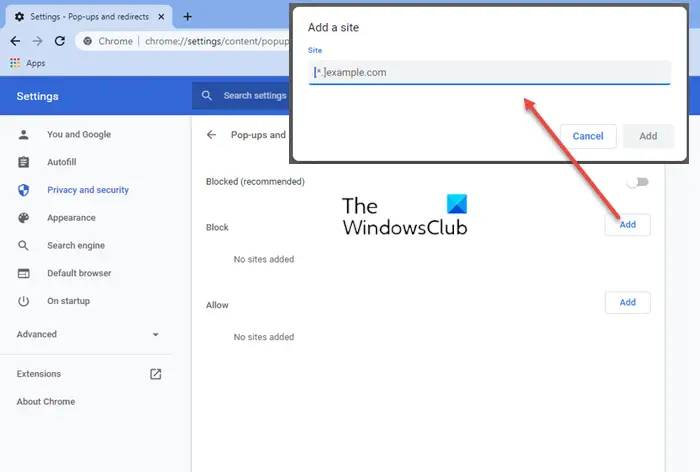
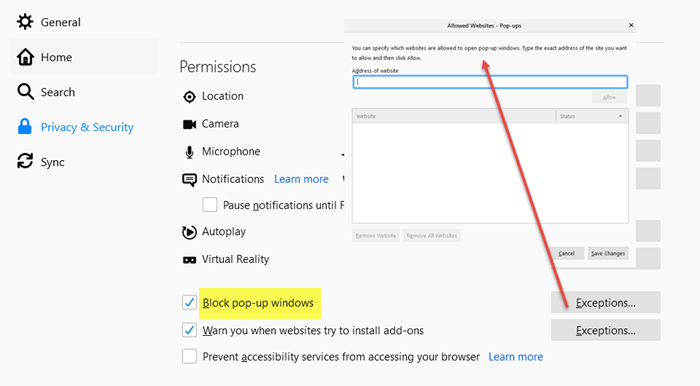
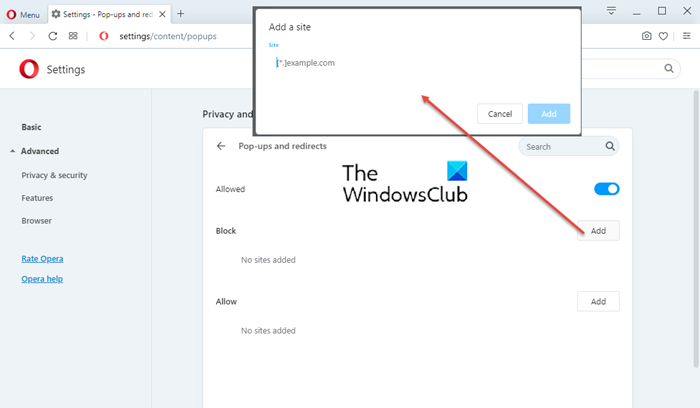
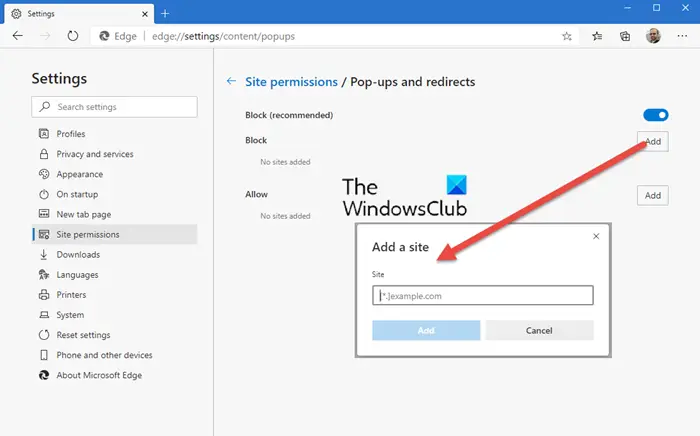
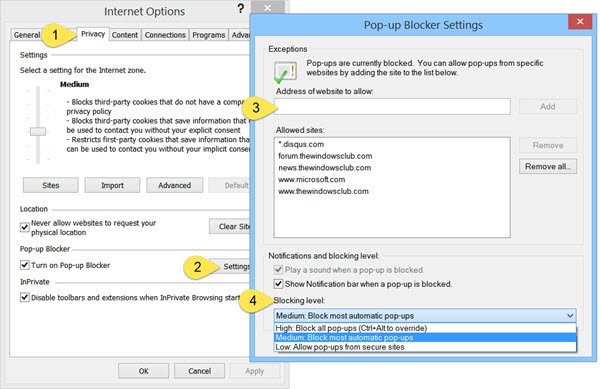

/img_01.png?width=300&name=img_01.png)
/img_02.png?width=450&name=img_02.png)
/img_03.png?width=450&name=img_03.png)
/img_04.png?width=450&name=img_04.png)
/img_05.png?width=450&name=img_05.png)
/img_06.png?width=350&name=img_06.png)
/img_07.png?width=400&name=img_07.png)
/img_08.png?width=400&name=img_08.png)
/img_09.png?width=2165&name=img_09.png)
/img_10.png?width=1617&name=img_10.png)
/img_11.png?width=350&name=img_11.png)
/img_12.png?width=450&name=img_12.png)
/img_13.png?width=508&name=img_13.png)
/img_14.png?width=450&name=img_14.png)
/img_15.png?width=450&name=img_15.png)
/img_16.png?width=400&name=img_16.png)
/img_17.png?width=400&name=img_17.png)
/img_18.png?width=2165&name=img_18.png)
/img_19.png?width=1662&name=img_19.png)
/img_20.png?width=1617&name=img_20.png)
/img_21.png?width=1594&name=img_21.png)

























:max_bytes(150000):strip_icc()/ScottOrgera-f7aca23cc84a4ea9a3f9e2ebd93bd690.jpg)
:max_bytes(150000):strip_icc()/002-clear-cookies-cache-in-chrome-1616232-6acd7c7b2fb549dc855a71207b88d2d7.jpg)
:max_bytes(150000):strip_icc()/001-block-browser-pop-up-windows-4108710-d1f4a6d41c104a2087331abc00b21389.jpg)
:max_bytes(150000):strip_icc()/002-block-browser-pop-up-windows-4108710-87ee5464f81d40bb806fc2aa841bc4b3.jpg)
:max_bytes(150000):strip_icc()/003-block-browser-pop-up-windows-4108710-93c6e7d38c2a40af816430cbd416b204.jpg)
:max_bytes(150000):strip_icc()/005-using-cortana-in-microsoft-edge-4059577-a2eb2c98972042a59df3b27ac58625bc.jpg)
:max_bytes(150000):strip_icc()/006-using-cortana-in-microsoft-edge-4059577-8393dcbb21994501ab74592b86eacb2c.jpg)
:max_bytes(150000):strip_icc()/001-block-browser-pop-up-windows-4108710-2757ae8888994511947a65f424956408.jpg)
:max_bytes(150000):strip_icc()/002-block-browser-pop-up-windows-4108710-182cf1a1482d4e78a66317951d45617a.jpg)
:max_bytes(150000):strip_icc()/003-block-browser-pop-up-windows-4108710-a104e26869fb485abdcffd992416f6c9.jpg)
:max_bytes(150000):strip_icc()/001-autofill-in-safari-for-os-x-and-macos-sierra-4103704-fc557bbc7ab341038f5be1d9953a2307.jpg)

